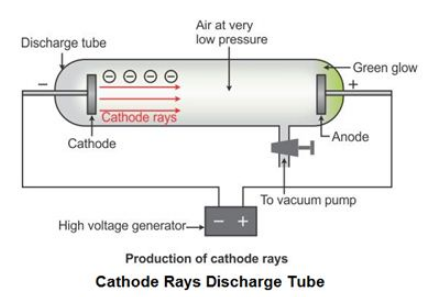

The dot was then made to "scan" across the screen according to the frequency of an incoming signal. The cathode rays were allowed to pass through a narrow aperture, effectively focusing them into a beam which appeared on the screen as a dot. This device used a cathode ray tube to produce luminescence on a chemically treated screen. The first such application came in 1897 in the form of Karl Ferdinand Braun's oscilloscope. While many scientists were busy trying to unlock the secrets of cathode rays, others were searching for ways to apply them toward practical ends. While performing a similar experiment in 1895, the German physicist Wilhelm Roentgen (1845-1923)Īccidentally discovered an even more penetrating form of radiation, which he called X-ray radiation. Lenard proved that cathode rays were not a phenomenon exclusive to a vacuum. The rays exited the tube through the window into the air.

Lenard succeeded in passing cathode rays through a window of thin metal set into the side of a Crookes tube. In 1892, Phillip Lenard followed up on Heinrich Hertz's discovery that under certain conditions cathode rays could penetrate metal. German scientist Eugen Goldstein (1850-1930) first dubbed Crookes's rays "cathode rays" in 1876. As the current was applied the vanes would turn slightly (it was as if they were blown by a gust of wind). He also installed tiny vanes within his tubes. Crookes continued Plucker's experiments with magnetic fields, confirming the glow was easily deflected. So great an improvement over Geissler's tubes were these that the "Crookes tube" quickly became the standard vacuum tube for use in scientific experiments. In order to confirm the experiments of Plucker and Hittorf, Crookes designed his own vacuum tube from which the air could be almost completely removed. Probably the most important research using cathode-ray tubes was performed in 1875 by the English physicist William Crookes.

This further confirmed the idea that the glow was caused by a particle emission. When a current was applied, the glow would be partially obscured by these obstacles, casting shadows. He also placed tiny obstacles inside the tube in the path between the two electrodes. He observed that the luminescent glow increased dramatically as the pressure within the tube continued to decrease. A student of Plucker's, Hittorf further improved the method for creating a vacuum within glass tubes of his own design. The next scientist to conduct important research using vacuum tubes was Johann Hittorf ((1824-1914) in 1869. The discovery indicated that the stream crossing the vacuum was composed of particles rather than rays. The glow could be moved by a powerful magnet. Second, he found that the glow responded to a magnetic field. The glow was much brighter than any achieved in previous experiments. First, he was able to produce a bright stream-like glow between the electrodes. Using the improved vacuum tube, Plucker made some startling discoveries. The new vacuum tubes were very popular, and became known as "Geissler's tubes". He constructed a hand-crank mercury pump that could remove most of the air from a tube. Sometime around 1855, Plucker convinced Geissler to design an apparatus for evacuating (completely emptying) a glass tube.

Geissler was a skilled glassworker, employed by the University of Bonn ( Germany) as a maker of scientific instruments. The German team of Heinrich Geissler (1815-1879) and Julius Plucker (1801-1868) pioneered the study of cathode-ray tubes. Faraday was not able to explore this effect completely because technology was not advanced enough to produce a high vacuum within the tube. It was English physician and chemist Michael Faraday (1791-1867) who noticed that as the amount of air in the tube decreased, a faint glow between the electrodes could be seen. When most of the air was evacuated from the tube, an electrical charge could be seen jumping across the gap between the two electrodes. Early ExperimentationĮarly experiments to solve the riddle of electricity often included the use of anode-cathode tubes (glass tubes that contained an anode at one end and a cathode at the other). Great scientists like Henri Becquerel (1820-1891 French chemist and an authority on luminescent, or light caused by radiant energy, phenomena), Marie Curie (1867-1934 Polish-born French physicist who worked extensively with radium) and Thomas Young (1773-1829 English physician and physicist) led the way. Phenomena that had never before been truly understood, such as light, heat, and electricity, were systematically explored. In the mid to late 1800s, the world experienced a scientific revolution.


 0 kommentar(er)
0 kommentar(er)
